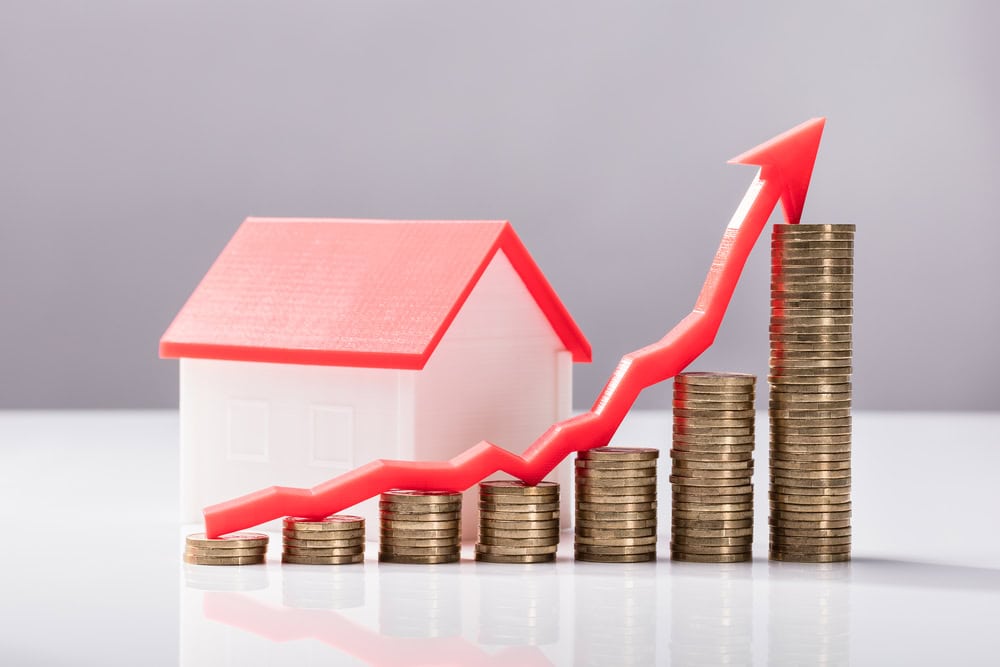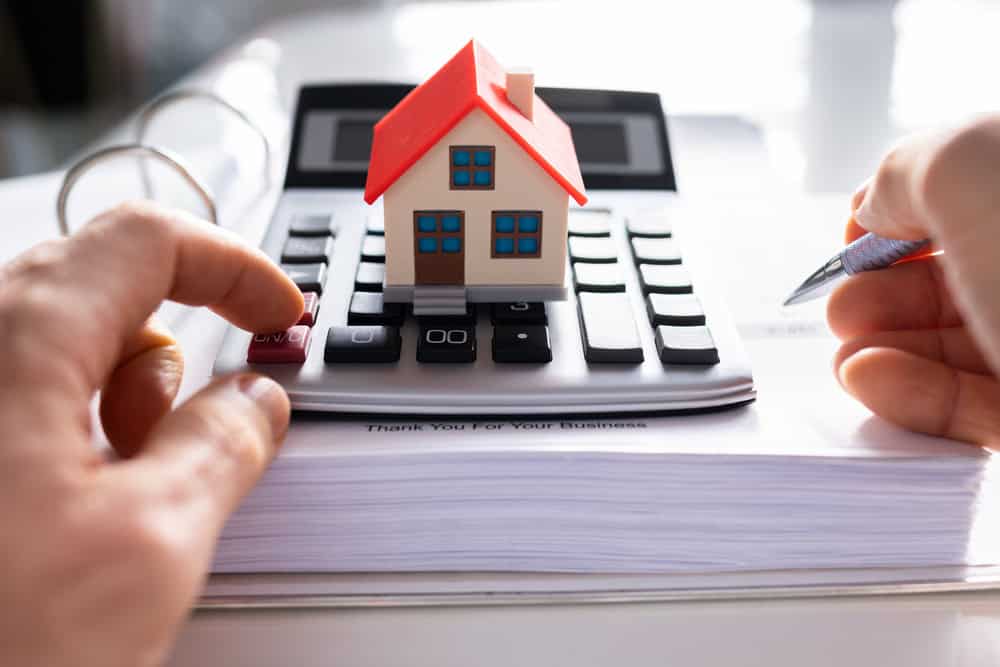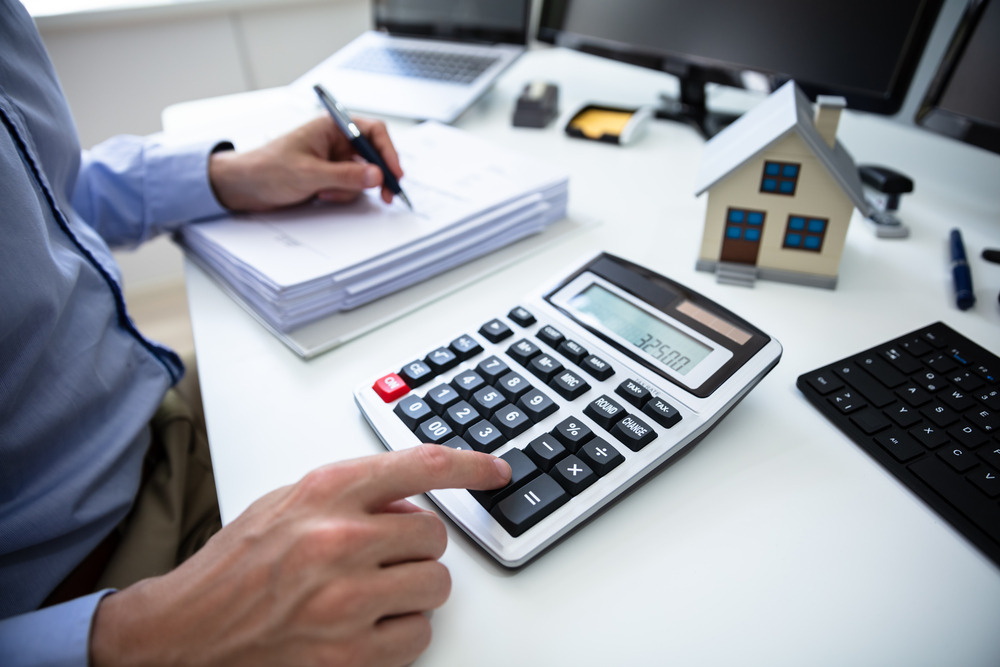The property tax reform 2022 presents property owners with a number of changes. The property data must be sent to the tax office by the end of January 2023. Failure to do so will result in heavy fines. What has changed since the reform and what homeowners and tenants now need to be aware of when property tax you can find out here:
What is property tax and why does it exist?
Property tax is a real tax that is collected by local authorities in Germany and, together with trade tax, is one of the most important forms of revenue. Unlike income tax, property tax is levied regardless of the taxpayer’s income. The level of property tax is determined by the cities and municipalities. Several criteria play a decisive role here.
As a property-related tax, this must be paid by the owners of a property or by the leaseholders. To understand why property tax is levied on land, you need to take a closer look at life in a city or municipality. In everyday life, people use the infrastructure of their place of residence. Roads, sidewalks, streetlights and other parts of the infrastructure are paid for by the municipalities. This is why property tax is not only levied on developed or undeveloped land, but there is also a Property tax for condominiums. They must always be kept in good condition, which is associated with ongoing costs. When the land register was introduced in the 19th century, property tax was also introduced. It is therefore one of the oldest taxes in Germany.
The legal regulations relating to property tax can be found in the Property Tax Act.
If you are affected by the property tax in everyday life, people usually mean property tax B. But what different types of property tax are there and how do they differ?
What are the differences between the various types of property tax?
There are the three property taxtypes A, B and C. Property tax A must be paid by persons who work in agriculture. The tax is levied on agricultural or forestry land.
Property tax B is the form of property tax that is often referred to as land tax. However, this is confusing, because in addition to landowners, owners of condominiums must also pay property tax B. Property tax B accounts for a large proportion of property tax revenue in Germany.
Property tax C comes into force again with the property tax reform. It was paid until the 1960s and is paid on land that is ready for construction but has not yet been built on. If developers leave their land lying fallow for a longer period of time, the local authorities are authorized to assess a higher rate of property tax on these undeveloped plots. This is intended to counteract land speculation. In addition, there is an increasing shortage of space. The municipalities want to use property tax C as an incentive to build on vacant land.
The 2022 property tax reform will come into force in 2025. However, the data must be submitted to the tax office by the end of January 2023, which puts landowners and apartment owners under pressure.
Why are there now changes to property tax? - The background to the reform
The impetus for a change in property tax came from the Federal Constitutional Court in 2018. It found that property tax was not levied in accordance with the principle of equal treatment, which is actually enshrined in the German Basic Law. According to the observations of the Federal Constitutional Court, similar properties are treated differently, which is unconstitutional. A new legal regulation had to be adopted by the end of 2019. This took the form of a Property tax reform of the Federal Ministry of Finance. During the transitional phase until the entry into force of the new Property tax reform on January 1, 2025, the property tax can still be levied, as was previously the case.
Under the previous law, property tax was levied according to the so-called standard values. These were based on property values that were sometimes several decades old. The values used to calculate property tax in western Germany date back to 1964. In the eastern parts of Germany, the valuation dates back even longer. The unit values determined are multiplied by a factor that is also standardized. This is the tax base figure. It is then multiplied by a Levy rate for the property taxwhich, however, is determined by the municipalities.
However, it can be observed that land and buildings in eastern and western Germany have developed very differently since their valuation in 1935 and 1964 respectively. For this reason, the Federal Constitutional Court was of the opinion in its analysis that there is no equal tax treatment. Comparable properties located in a neighboring area pay different levels of property tax, as the standard valuation has become decoupled from the actual values of the properties over the years.

What exactly will change as a result of the property tax reform?
The property tax reformalso known as the Property Tax Reform Act (GrStRefG), was passed jointly by the Bundesrat and Bundestag in December 2019. The aim of this reform is to balance out the inequality in the levying of property tax and to simplify the valuation procedures for property tax on land and apartments. At the same time, the aim is to ensure that there is no additional burden for property owners.
The new Property Tax Reform Act comes into force in January 2025. In the meantime, property tax will continue to be calculated and paid as usual. The transitional period is relatively long, but is justified by the fact that new statistical rent levels and property values have to be determined in numerous municipalities. In its ruling, the Federal Constitutional Court demanded that new standard values be determined for the calculation of property tax. This process must be completed by the authorities by the end of December 2022. The owners of land and apartments are obliged to submit the property value that was valid on January 1, 2022 to the tax office between July 2022 and January 2023. This is done via the online tax platform ELSTER.
Information on the following criteria must be provided:
- Living space
- Standard land value
- Land area
- Type of building
- Year of construction of the building
- Location of the property
What will change as a result of the property tax reform?
The additional burden on landowners was to be avoided. This was the aim of the Federal Tax Office. Despite the reform, the main features of property tax collection are therefore to remain the same. The increase in property value will be taken into account in the new assessment. However, whether it can be guaranteed that property owners will not actually have to pay higher amounts depends, among other things, on the assessment rates set by the municipalities and local authorities in the federal states. It is therefore not yet possible to make a definitive statement as to whether there will actually be no additional burden on property owners.
A new special feature is that the federal states may make use of a so-called opening clause to deviate from the federal model for calculating property tax. In addition, there will no longer only be property tax A and B, but a third property tax, property tax C, will be added. In this way, thanks to the Changes to of the property tax from 2025 fallow, buildable land will also be taxed.
What is the new property tax C?
There are now numerous conurbations in Germany where there is a chronic housing shortage. Land values are rising rapidly, prompting many landowners to preserve vacant, ready-to-build plots as speculative properties. Land is thus bought in order to wait for it to increase in value and then resell it at a profit. However, when people speculate with building land, they prevent new housing from being built on these plots that are ready for construction.
As part of the property tax reform attempts are being made to actively tackle this problem. From the entry into force of the property tax reform on January 1, 2025, municipalities will be authorized to set a higher assessment rate for vacant plots that are ready for construction. The property tax is thus also levied on undeveloped land levied. This creates financial incentives to build on the land and generate new living space in densely populated urban areas. Speculation with building land becomes more expensive due to the rising property tax C and is therefore less profitable. The New property tax is actually not as new as you might think. It was already levied in the 1960s, but was then abolished.
What is the opening clause and which federal states have introduced their own calculation model?
After the Federal Constitutional Court found that the current property tax laws actually violate the Basic Law and are therefore illegal, a property tax reform had to be drafted. However, the federal state of Bavaria obtained an opening clause that allows a recalculation that deviates from the federal model. If this deviating regulatory competence had not been enforced, the Property tax reform is highly unlikely to be passed within the deadline imposed by the Federal Constitutional Court.
Thanks to the deviating regulatory competence, the federal states are now able to use the so-called opening clause their own calculation method for the new property tax apply. Bavaria has since been joined by other federal states.
The following five federal states have opted for their own property tax model:

The following five federal states have opted for their own property tax model:
- Bavaria
- Hesse
- Hamburg
- Baden-Württemberg
- Lower Saxony
These federal states have opted for a mixed form:
- Saarland
- Saxony
The remaining nine federal states have committed themselves to following the federal model:
- Bremen
- Berlin
- Brandenburg
- North Rhine-Westphalia
- Mecklenburg-Western Pomerania
- Thuringia
- Saxony-Anhalt
- Rhineland-Palatinate
- Schleswig-Holstein
Accordingly, property tax will beset upaccording to federal state in future.
How is property tax calculated correctly according to the federal model?
The calculation of the property tax is calculated in three steps, which can be briefly summarized:
Value of the property x tax base x assessment rate
We would like to explain the steps in more detail here:
- Step: The property tax value is calculated on the basis of the standard land value and the amount of the statistically determined net cold rent. The latter depends on the rent level of the municipality in which the condominium is located. There are also other factors, such as the age of the building, the type of property or the plot area. How high the standard land values are can be found in the standard land value information systems of the federal states. The Federal Ministry of Finance has determined the rent levels of the individual municipalities in the 16 federal states. This was done on the basis of data provided by the Federal Statistical Office.
- Step: The previous values for real estate and land in western Germany dated back to 1964. In eastern Germany, they even dated back to 1934. The tax base is necessary for calculating the property tax. It is being lowered so that property values are less affected and are closer to the current value of properties in the future. Cooperative and communal housing as well as social housing should also be promoted in the future. This will also be achieved through property tax, among other things. The discount on the tax base for social housing promotion is 25 percent.
- Step: The assessment rates are adjusted in the municipalities. It has been agreed and communicated that property tax revenues in the municipalities should not increase. This would not be politically feasible. For this reason, the municipalities and local authorities have the authority to adjust the property tax revenue by means of an assessment rate. It has been communicated by the municipalities that they will use this collection rate will be used in practice to reduce the property taxrevenue unchanged.
The new form of calculating the property tax is to be introduced as part of the property tax reform is intended to ensure that the amount of property tax is directly related to the value of the property.
When does the new property tax have to be paid?
We are currently in the transition phase. The property tax reform was successfully passed and will officially come into force on January 1, 2025. From this date, the New property tax due. Until December 31, 2024 and thus until 2025 the federal states are obliged to increase the property tax on the basis of assessed values. It is not yet known how high the property tax will actually be according to the new calculations. This information will probably be announced in the course of summer or fall 2024.

What specific effects will the reform have on property tax payments by owners and tenants?
Previously, the amount of property tax was assessed differently. The Federal Constitutional Court has ruled that this system is outdated and violates the law of uniform valuation for property tax. This is the background to the Property tax reform. The aim of this is to ensure that the total property tax revenue for local authorities and municipalities neither decreases nor increases. However, this does not mean that property tax payments for individuals will not change. While some landowners will have to pay significantly higher amounts of property tax from 2025, property taxes will fall for other owners.
At this stage, it is not yet possible to say how high the property tax for real estate will actually be from 2025. This is because it is not known what assessment rate the municipalities will introduce to adjust the property tax.
As the property tax for rented apartments or houses is passed on to the tenants via the service charges to the tenants tenants, people who live in rented accommodation are also affected by the property tax reform are also affected.
Why do owners now have to submit a declaration to determine the property tax value?
The new property tax values will be determined after the cut-off date of January 1, 2022. At this point in time, however, it was not possible to provide owners with an electronic platform to enter the values of their properties or apartments in a bundle. For this reason, the tax office does not have the data it needs to calculate the new property tax according to the Property tax reform which comes into force on January 1, 2025. Therefore, owners of land, houses or apartments are obliged to submit a new property tax return in electronic form via the ELSTER portal by January 31, 2023. This will ensure that the tax office has up-to-date values in digital form and that owners do not have to provide information again at a later date.
All data should be available electronically for subsequent calculations from the collection between July and October 2022. In May and June 2022, owners received a notification from the tax office that they will have to submit their property tax return electronically between July and October 2022. Due to the Property tax reform must every owner submit this property tax on time. If you have not yet done so, you should initiate the process as soon as possible.
What information must the declaration contain?
What information you for the property tax reform depends, among other things, on the federal state in which your property is located. This is due to the fact that the federal states are allowed to decide for themselves which model they want to use to calculate property values. Which models are available, in which federal states they are effective and which documents you for the property tax reform 2022, you can find out here:
The land value model
Property owners whose land is located in Baden-Württemberg probably have the easiest time with the calculation. The officially determined standard land value is combined with the plot area to determine the amount of property tax. The Calculation of the property tax is mainly based on the standard land value. It does not matter how large the residential or commercial building on the property is. The landowner must collect the following data:
- Area of the property
- Standard land value
- Land register data
- File number of the
- Unit value
- Type of use
The area factor model
Persons whose real estate is located in Hamburg, Hesse, Bavaria or Lower Saxony have to pay the property tax adhere to the area factor model. The tax offices require the following data for this model, which is somewhat more complex:
- Living space
- Type of use
- Land register data
- Land area
- File number of the
- Unit value

The federal model
In the remaining eleven federal states, the property tax according to the federal model be calculated. This type of calculation involves the greatest effort. The owners of the properties or apartments must provide a whole range of information. At the same time, however, it is envisaged that this model presented by the federal government will enable buildings and properties to be accurately mapped.
The federal model is used to determine the property tax in the following eleven federal states:
- Berlin
- Saxony-Anhalt
- Bremen
- Mecklenburg
- Western Pomerania
- Schleswig-Holstein
- North Rhine-Westphalia
- Brandenburg
- Saxony
- Thuringia
- Saarland
- Rhineland-Palatinate
The following information is required to calculate the property tax according to the federal model:
- Standard land value
- Living space
- Land area
- Type of use
- Land register data
- File number of the
- Unit value
- Number of garages and
- Pitches
- Possible building age
- Number of apartments and
- their size
- Type of property
By when must the declaration for determining the property tax value be submitted?
Many owners are faced with the question of when they have to submit their property tax return must. The deadline for submitting the required information for the Property tax lasts from July 1, 2022 to January 31, 2023 on. Due to delays in implementation, the federal states have decided to extend the deadline. The deadline originally ended on October 31, 2022.
How must the declaration for determining the property tax value be submitted?
The property tax return must be submitted in digital form directly via the central ELSTER portal. If you complete your income tax return yourself, you most likely already have your own ELSTER account. If you have previously submitted your tax returns in paper form, you must register for the Property tax on the ELSTER-portal. This process can take up to two weeks because the security code for registration is sent by post by the tax office.
If you have children who have an ELSTER account, they can enter the details for the property tax return on your behalf.
You don’t have an ELSTER account yet and don’t know exactly how to transmit the data to the tax office? Then you can use the Declaration of assessment of the property tax by your tax consultant or use official tax software.
What is the "Property tax return for private property" website and who can use it?
If your property is located in one of the federal states participating in the federal model, you can use a state website to submit your property tax return easily without using the ELSTER portal. This works if you use the Property tax for private property would like to submit.
Simply click on this website and follow the step-by-step instructions.
You can use the online service if you belong to one of the following groups:
- You are the owner and would like to submit a tax return for your property. In this case, other private individuals may also be owners.
- You are a close relative of the owner of a property and would like to support this person in submitting the declaration.
- You are the owner of a property that you acquired after January 1, 2022.
- You are the owner of a property that you acquired before January 1, 2022, but you paid the purchase price as of January 1, 2022. However, you are not yet entered in the land register as the owner of the property.
- You are a lawyer, part of the property management or tax consultant and have a power of attorney in accordance with § 80 AO to submit the declaration on behalf of an association, an organization, a foundation, a partnership or a company.
Our tips: What property owners should bear in mind when submitting the declaration to determine the property tax value:
As part of the property tax reform landowners are already facing a number of changes in 2022. We would like you to understand the process of the new Property tax return as organized as possible. With our tips, the Declaration of assessment of the property tax much easier and you have an overview at all times:

Using the land registry and the "BORIS" website
If you have only recently purchased your plot of land, house or apartment, you will certainly have no problem finding the purchase contract and information from the land registry in your folder. But what happens if you have owned a property for many years and can no longer find the exact details of the land?
In this case, it is best to contact the land registry of your local authority or municipality directly. You can easily look up the registration number and area of your property in the land register. The former is the parcel number.
The federal and land value model requires, among other things, the standard land value. This serves as the basis for determining the total price of the property. The total value of the property is calculated by multiplying the standard land value by the area of the property.
Many landowners ask themselves, where the standard land value for the property tax obtain. The federal states provide a tool (usually free of charge) with which you as the owner can find out online how large the official area of your property is and how high the standard land value is for your land. All you have to do is enter your place of residence and house number or click on the property in question on a map. The tool is called BORIS and is a great support in collecting the necessary data for the property tax.
Determine the living space particularly carefully
If landowners want to living space for the determination of the property tax If you have to specify the floor space, you usually base this on the data that can be found in the purchase contract, the building plans or the insurance policy. In the case of rented apartments or houses, the official information on living space is taken from the rental agreement.
However, there are cases in which no floor space information is available. Then the living space must be measured in order to calculate the property tax. As the owner, you can outsource this task to a professional surveyor. The service costs several hundred euros. However, you can be sure that the living space has actually been measured correctly.
How to calculate the living space for the property tax reform yourself? If you decide to take on this task yourself, then you must adhere to the Living Space Ordinance. It specifies how the area of individual rooms is calculated correctly. Rooms with sloping ceilings, low ceilings or a swimming pool, for example, only need to be counted as half. A terrace or balcony counts as a quarter and laundry rooms, storage rooms or cellars are not counted.
If the living space is measured incorrectly, this has a direct impact on the amount of property tax.
Check value-enhancing factors carefully
There are various factors that influence the property tax value. We therefore recommend that you provide all data as accurately as possible and carefully check factors that increase the value of the property. If you have to state the year of construction for the property, as is the case with the federal model, then this refers to the year of first occupation. In addition, however Core refurbishments with the property tax reform must be documented because they significantly increase the value of the house. This in turn means that the basis for calculating the property tax increases.
In addition, some federal states have introduced special regulations. These are federal states such as Hamburg, Hesse and Baden-Württemberg, where there are large conurbations and housing is in short supply. Properties that are ready for construction but lie fallow can be taxed at a higher rate by the municipalities and local authorities. This is intended to specifically promote the development of unused land.
It is essential to submit the declaration on time
The tax office sent a letter to all property owners in early summer 2022 clearly stating the deadlines for submitting the declaration. The period for the Declaration of assessment of property tax falls in the period between July 1, 2022 and January 31, 2023. If the owners have not fulfilled their obligation by this date and have not yet submitted their Property taxdeclaration submitted too lateyou may have to expect high fines. These can reach a sum of 25,000 euros. We therefore recommend that you submit the declaration of assessment to determine the property tax by the deadline of January 31, 2023.
Summary
The Federal Constitutional Court declared the current method of determining property tax to be unconstitutional due to outdated data and values and called for a reform. The draft of the Property tax reform was successfully passed as a result. The aim of the federal states is not to change the general tax revenue. However, there will be a redistribution. While some landowners will have lower taxes in the future, other property owners will see their taxes increase.
As part of the property tax reform, which is in a transitional phase until December 31, 2024, around 36 million properties across Germany will have to be revalued. For this reason, property owners have been obliged to submit a declaration of assessment of the property tax in the period between July 1, 2022 and October 31, 2022. Property tax to be submitted. This can only be done in digital form, using the official ELSTER platform of the tax office. However, tax consultants or lawyers can also be commissioned with this task.
It is not yet possible to determine how high the new property tax will be at this time. Among other things, the values depend heavily on the assessment rate set by the individual municipalities and local authorities. A majority of the federal states will adhere to the calculation model presented by the federal government. Other federal states, however, have decided to develop their own systems and have developed the land value model and the area factor model.



